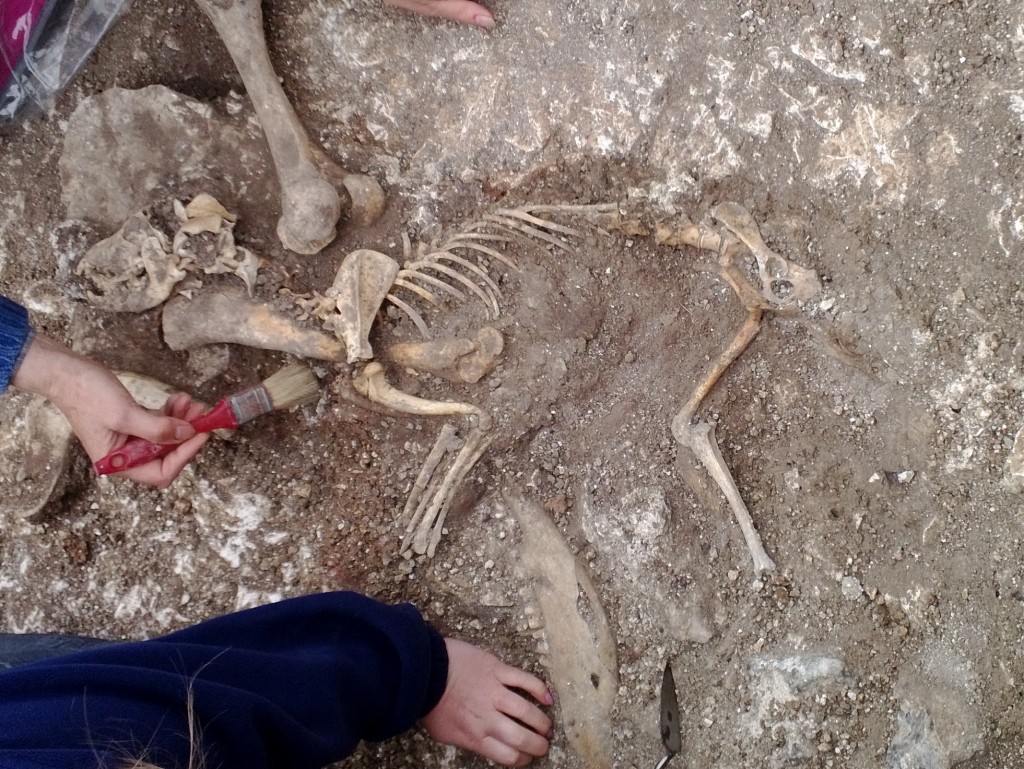Monday 17th June 2013
Day 14-Ritualistic Iron Age Dog Deposit
One of the Iron Age pits beside the Roman villa has once again become the center of attention! Last week students Jayne Matthews, Zoe Edwards, Amy Green and Sharna Katzeff, recovered the first evidence to suggest that the pit had a kind of special deposit. Particularly large shards of black burnished ware (a pottery type 120 AD to the 4th century AD) were recovered and initial inspection showed that two of the shards seem to be from one pot. When these shards were being recovered, as pictured below, the top surface of dog bones also began to appear.

Some of the particularly big shards of black burnished ware recovered from an Iron Age pit. Courtesy of Bournemouth University.
Today, further excavation was undertaken on the Iron Age pit by Zoe Edwards and Jane Randall. This was in order to uncover the entirety of the dog skeleton, which has now been identified as a puppy. However this uncovering also revealed other bones, mostly mandibles, from cattle and/or horse. Plan drawing before lifting and comparison with other pits with similar deposits will determine whether the deposit would be considered ritual or not. It is important to take into consideration that what may seem strange to do today, may have been normal practice in that period! The skeletal deposit is pictured below.

Dog skeleton with cattle and/or horse bones, including long bones and mandibles. Courtesy of Bournemouth University.
More pottery was also found in associate with the juvenile dog remains. Without lifting it, the pottery appears to be a very large fragment of a ceramic rim of a reddish-brown colour. The pottery style is indicative of Middle to Late Iron Age, but the style also made a re-appearance in the 3rd and 4th century AD. This pottery and the Black Burnished Ware recovered earlier last week is extremely interesting as previous dog skeleton deposits recovered on the Durotriges Project have not been associated with any form of pottery. Only further analysis will tell if this is a unique ritualistic deposit or not!